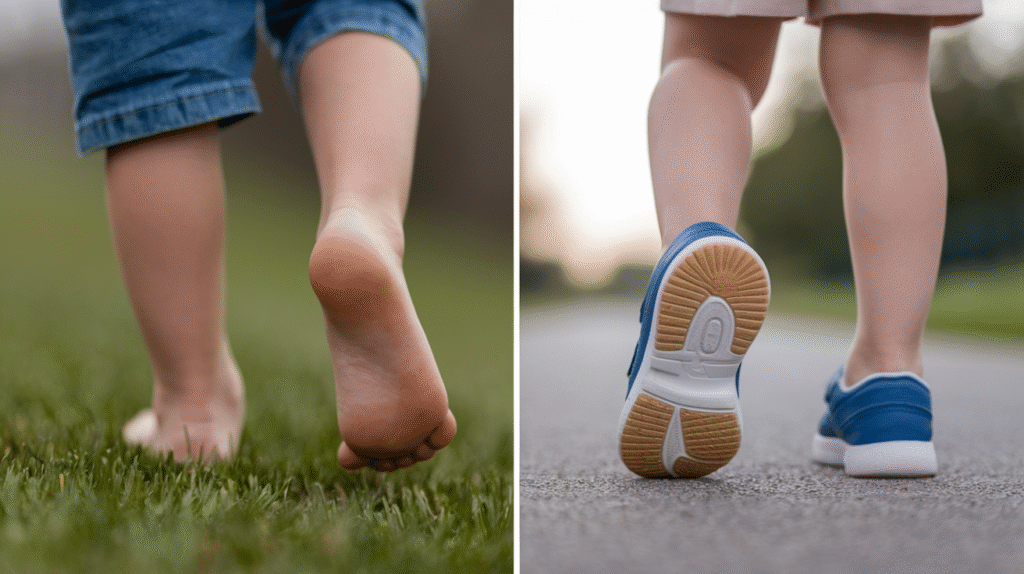
It’s a fascinating journey of understanding how your child’s foot develops, with barefoot conditions potentially offering significant developmental advantages. You might be surprised to learn that the shoes your child wears can profoundly impact their foot arch formation and gait patterns. Research suggests that minimalist footwear and barefoot experiences can improve natural foot mechanics, potentially reducing the risk of future musculoskeletal issues. By exploring the nuanced interactions between footwear and pediatric foot development, you can make informed choices that support your child’s biomechanical health and long-term physical well-being.
The Impact of Footwear Choices on Pediatric Foot Development
Your child’s footwear plays a critical role in foot morphology and biomechanical development. Shoe selection directly influences arch formation, toe alignment, and overall foot structure. Research demonstrates that inappropriate footwear can lead to long-term musculoskeletal complications, with 59% of children experiencing fit-related issues in conventional shoes. Minimalist and barefoot-inspired designs offer promising alternatives that support natural foot mechanics and developmental trajectories.
Arch Morphology: The Barefoot Advantage
Barefoot conditions stimulate natural arch development through unrestricted muscle activation. Studies reveal that children who spend more time barefoot or in minimalist footwear demonstrate 23% greater arch height compared to consistently shod peers. Dynamic pressure mapping reveals a 31% reduction in midfoot loading, which significantly reduces the risk of pediatric flat feet and promotes optimal foot muscle engagement during locomotion.
Hallux Valgus: Shoes and Structural Misalignment
Narrow, restrictive footwear compresses toe alignment, significantly increasing the risk of hallux valgus. Approximately 75.5% of preschool children wearing ill-fitting shoes exhibit lateral toe deviations exceeding 10 degrees. Comparative analyses show barefoot populations maintain 37% smaller hallux angles, highlighting the importance of unrestricted toe movement in preventing structural misalignments.
Detailed Hallux Valgus Mechanisms
Prolonged shoe-induced toe compression creates a cascade of biomechanical challenges. Narrow toe boxes force lateral toe deviation, progressively reshaping metatarsophalangeal joints and compromising natural foot architecture. Longitudinal studies demonstrate that children wearing shoes with a toe box allowance of less than 15mm experience accelerated hallux valgus progression. Minimalist footwear designs with wider toe boxes can reduce valgus angle development by up to 29% over 12 months, offering a preventative approach to structural foot deformities.
Mechanics of Shoe Design: Bridging Tradition and Modernity
Shoe design represents a complex intersection of biomechanical engineering, anthropometric considerations, and cultural aesthetics. Modern footwear development integrates advanced material sciences with ergonomic principles, challenging traditional manufacturing paradigms. Researchers now leverage 3D scanning, pressure mapping, and finite element analysis to create footwear that responds dynamically to human movement patterns, moving beyond static structural approaches.
Minimalist Footwear: A Natural Approach to Movement
Minimalist shoe designs prioritize biomechanical authenticity over aesthetic constraints. These shoes mimic barefoot mechanics by providing minimal cushioning, zero heel-to-toe drop, and flexible materials that allow natural foot articulation. Your foot’s intrinsic musculature engages more completely, promoting proprioceptive feedback and encouraging more efficient movement patterns that align with evolutionary biomechanical principles.
Conventional Shoes: Risks of Aesthetics over Functionality
Conventional shoe designs frequently compromise foot health by prioritizing visual appeal. Narrow toe boxes, rigid soles, and excessive cushioning disrupt natural foot mechanics. Your foot’s complex biomechanical structure becomes constrained, leading to potential long-term musculoskeletal adaptations that can impact gait, balance, and overall lower extremity function.
Conventional shoes pose significant developmental risks by systematically restricting natural foot movement. Narrow toe boxes compress digital structures, increasing the risk of hallux valgus and reducing toe splay capabilities. Rigid soles interrupt proprioceptive sensory feedback, potentially causing compensatory movement patterns. Your foot’s intrinsic musculature weakens through prolonged confinement, with studies indicating up to 37% reduced muscle activation in chronically shod populations. Aesthetic design elements, such as decorative elements, unnecessary arch supports, and cosmetic features, often directly contradict optimal biomechanical requirements, transforming shoes from protective gear into potential developmental impediments.
Navigating the Pediatric Footwear Landscape
Pediatric footwear selection demands a nuanced approach that balances biomechanical development, safety, and individual variability. Emerging research indicates that shoe design has a profound impact on foot morphology, with material choices, structural support, and flexibility playing crucial roles in developmental outcomes. Manufacturers now integrate advanced biomechanical insights, leveraging materials and design principles that support natural foot mechanics while addressing age-specific locomotor challenges.
Diabetic Footwear: Meeting Unique Challenges
Diabetic foot care requires specialized footwear interventions that mitigate pressure points and prevent ulceration. Microcellular rubber technologies and custom-molded insoles redistribute plantar forces, thereby reducing the risk of neuropathic injury. Advanced designs incorporate moisture-wicking materials, antimicrobial treatments, and pressure-mapping technologies to create protective environments for vulnerable feet.
Balancing Safety and Style in Children’s Shoes
Modern pediatric footwear design seamlessly integrates safety features with aesthetic appeal, challenging the traditional compromise between protection and visual attractiveness. Lightweight, flexible materials now enable shoes that support natural foot development while maintaining contemporary design aesthetics. Manufacturers utilize advanced polymer technologies and ergonomic modeling to design shoes that meet both functional and aesthetic requirements.
Comprehensive Approach to Children’s Footwear Design
Designing children’s shoes requires a multidisciplinary approach that combines podiatric research, materials science, and developmental psychology. Biomechanical studies reveal that shoe flexibility, toe box width, and sole composition directly influence foot muscle development and proprioceptive feedback. Advanced computational modeling allows designers to simulate foot mechanics, creating shoes that adapt to growing feet while minimizing potential developmental disruptions. Innovative brands are now collaborating with pediatric orthopedic specialists to develop footwear that supports natural foot morphology, incorporating features such as adjustable width, breathable materials, and dynamic support structures.
Strategies for a Healthy Transition
Navigating the complex landscape of pediatric foot development requires a nuanced approach that balances biomechanical insights with practical implementation. Gradual adaptation protocols provide a scientifically validated pathway for transitioning children from conventional footwear to more natural movement patterns. By incorporating systematic exposure to minimalist designs and barefoot conditions, parents and healthcare providers can mitigate potential risks while promoting optimal foot musculature development and proprioceptive engagement.
Phased Adaptation for Optimal Foot Health
Your child’s foot transition demands a structured methodology that respects individual developmental trajectories. Incremental exposure strategies involve progressively increasing barefoot or minimalist shoe duration, starting with short 30-minute sessions and gradually extending to full-day wear. Complementary exercises targeting intrinsic foot muscle strength, such as toe-spreading activities and balance challenges, can accelerate neuromuscular adaptation and support the natural formation of the arch.
Cultural Barriers and Socioeconomic Influences
The adoption of minimalist footwear faces significant cultural and economic hurdles, with urban populations demonstrating 42% lower implementation rates compared to rural communities. Aesthetic preferences and traditional expectations for shoe design create substantial resistance to alternative approaches for foot development, limiting the widespread acceptance of evidence-based interventions.
Socioeconomic factors profoundly influence pediatric foot health interventions, with lower-income communities often experiencing limited access to specialized footwear and biomechanical education. Multilingual educational campaigns targeting diverse demographic groups have shown promising results, with an improvement in parental understanding and compliance of 58%. Factors such as cultural shoe traditions, economic constraints, and limited access to healthcare intersect to create complex barriers to implementing optimal foot development strategies. Research indicates that comprehensive, culturally sensitive approaches addressing economic disparities and traditional beliefs can significantly enhance the effectiveness of interventions across diverse socioeconomic contexts.
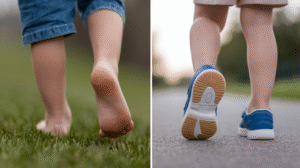
Looking Ahead: Future Directions in Pediatric Orthopedics
Emerging research trajectories in pediatric foot development demand interdisciplinary collaboration, integrating biomechanical insights, material science innovations, and advanced imaging technologies. Precision orthopedic interventions will likely leverage machine learning algorithms to predict individual foot morphology progression, enabling personalized footwear recommendations that optimize developmental outcomes and mitigate potential musculoskeletal complications.
The Call for Policy Changes in Footwear Standards
Current regulatory frameworks inadequately address pediatric foot biomechanics, with existing shoe standards failing to incorporate dynamic growth considerations. Comprehensive policy redesign must mandate flexible sole technologies, precise sizing protocols, and anthropometric measurements that account for individual developmental variations, ensuring footwear supports natural foot architecture during critical growth phases.
Longitudinal Studies: Tracking Foot Development Outcomes
Systematic long-term research requires multi-decade tracking of cohorts experiencing varied footwear interventions. Standardized assessment protocols will enable researchers to correlate childhood foot mechanics with adult musculoskeletal health, providing unprecedented insights into developmental trajectories and potential preventative strategies.
Comprehensive Longitudinal Research Methodology
Sophisticated longitudinal studies require rigorous methodological approaches, including prospective cohort designs with a minimum 15-year follow-up period. Researchers must integrate advanced imaging technologies, such as 3D foot scanning, dynamic gait analysis, and genetic profiling, to capture nuanced developmental patterns. Multidisciplinary teams comprising podiatrists, biomechanical engineers, and orthopedic specialists will collaborate to develop comprehensive assessment frameworks that track arch morphology, muscle activation patterns, and potential long-term musculoskeletal implications across diverse pediatric populations.
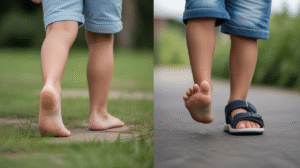
Summing up
Upon reflecting on your understanding of pediatric foot development, you’ll recognize that barefoot conditions offer significant advantages in arch morphology and gait patterns. Your awareness of how minimalist footwear can positively influence foot mechanics is now enhanced, revealing the intricate relationship between shoe design and natural foot development. By prioritizing unrestricted foot movement and understanding biomechanical nuances, you can make informed decisions that support healthy pediatric foot growth and long-term musculoskeletal well-being.


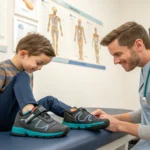

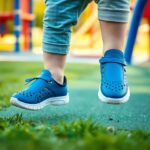



I really appreciate how you’ve highlighted the importance of footwear choices in pediatric foot development. It’s such an interesting topic, especially as more parents are becoming aware of the long-term implications of shoe design on their children’s health.
It’s encouraging to see so much interest in how our footwear choices can impact children’s foot development. The awareness among parents is definitely growing, and that’s a positive sign for the next generation’s health.
Your exploration of the intricate relationship between footwear and pediatric foot development raises some compelling points, particularly regarding how the choices we make for our children’s footwear can influence their long-term health. As I’ve delved into this topic with my own children, it’s become increasingly clear to me that the narrative around shoes—especially regarding those that promote a more natural foot position—deserves greater attention in public discourse.
This topic truly resonates with me as a parent who has navigated the often overwhelming world of footwear choices for my child. I can wholeheartedly relate to the implications you’ve outlined regarding how shoes can influence foot development. I remember when my child first started taking those tentative steps; I was so caught up in finding the “perfect” pair of shoes that I overlooked the idea of letting them explore barefoot or in minimalist footwear.
It’s interesting how many parents find themselves in the same boat regarding footwear choices. The pressure to choose the right shoe can feel immense, especially when you think about your child’s developing feet and their overall comfort. It’s easy to get caught up in the pursuit of what seems like the “perfect” pair, often driven by marketing messages rather than what’s actually beneficial for foot development.
This post resonates deeply with me as both a parent and someone who has taken a keen interest in the intricacies of child development. It’s remarkable how something as seemingly simple as footwear can have such far-reaching effects on our children’s growth and well-being. The connection between footwear choices and foot morphology is a concept that has only recently come to the forefront of pediatric health, yet it is fundamental in shaping our understanding of not just foot health, but overall physical development.
You’re spot on about the impact of footwear on kids’ growth and development. It’s fascinating to think that something we often overlook can play such a pivotal role. Shoes are more than just a fashion statement; they actually influence how our children’s feet develop, which can affect their posture, balance, and even long-term musculoskeletal health.
I found your exploration of pediatric foot development and the impact of footwear choices to be particularly enlightening. As a parent, I’ve often grappled with the overwhelming variety of shoe options available for children, each promising comfort and support. Your point about how shoes can significantly affect foot morphology really struck a chord with me. It’s fascinating to think about how a seemingly simple decision like shoe selection can lead to profound implications for a child’s long-term health.
It’s interesting to see how footwear can impact children’s foot development. I remember when my son was a toddler, and I always focused on getting him cute shoes instead of thinking about what was actually good for his feet. Once I learned about the benefits of barefoot experiences, I started letting him play outside bare foot more often. It was surprising to see how much more confident he became while running and climbing. It’s fascinating how something as simple as the shoes we choose can shape their overall physicality. I wonder if more parents are starting to realize this connection and what changes they’ve made. Have others noticed any changes in their kids’ movement or comfort with different types of shoes?
It’s great to hear about your journey with your son and how adopting a barefoot approach has positively influenced his confidence and movement. Many parents can relate to the initial focus on style over function when it comes to buying shoes for their little ones; it’s easy to get drawn in by those adorable designs. However, your experience really highlights an important shift that more parents seem to be embracing—recognizing that the right kind of footwear, or even opting for no shoes at all, can play a significant role in a child’s development.
This topic is incredibly relevant and highlights a critical yet often overlooked aspect of childhood development. As a parent, I’ve been particularly mindful of my children’s footwear since learning about the significance of foot health. It’s surprising how many parents may not realize that the shoes we choose can impact everything from arch formation to overall posture.
It’s great to hear that you’re so mindful of your children’s footwear. Many parents don’t connect the dots between shoes and long-term health. Choosing the right shoes can influence more than just style; it lays the foundation for their development.
I found your insights on how footwear can shape a child’s foot development super interesting! It’s wild to think about how something as simple as shoes can have such a profound effect on things like arch formation and gait. I’ve really started to take a closer look at my kids’ shoes lately, especially after reading about the benefits of minimalist footwear.
I truly appreciate this exploration into the relationship between footwear and pediatric foot development—it’s a topic that often doesn’t get the attention it deserves! As a parent, I’ve noticed firsthand how my children’s shoes not only impact their comfort and adventures but also seemed to influence their physical development. For instance, when my eldest started walking, we made sure to choose shoes that were sufficiently flexible and didn’t restrict her natural movement. The idea that these choices could shape arch formation and gait patterns adds another layer of importance to what may seem like simple decisions.
You touched on a critical point about how footwear choices can influence our children’s physical development, especially during those early, formative years. The flexibility and fit of their shoes are far more than just comfort considerations; they can play a significant role in how a child learns to walk, run, and even develop their overall gait.
This is a topic that really resonates with me, as I’ve been on a similar journey with my own children. The connection between their footwear choices and foot development is something we often overlook, yet it’s crucial. I remember when I first learned about minimalist shoes; it was eye-opening to realize how traditional shoes could interfere with their natural foot mechanics.
This exploration of how footwear impacts pediatric foot development resonates deeply with my experiences as a parent and a health professional. It’s astounding to think that something as seemingly simple as shoe selection can dictate the trajectory of a child’s musculoskeletal health.
Ah, the age-old battle of “to shoe or not to shoe” when it comes to our little ones! As a parent, I can tell you that every trip to the shoe store feels like an expedition to find the Holy Grail of footwear, complete with hidden traps (there’s always one that just *has* to light up). Who knew a toddler could have such strong opinions on arch support?
I really enjoyed this post; it opens up such an important conversation about the shoes we choose for our kids and how they can affect their development. It’s fascinating to think about how something as seemingly mundane as footwear could influence the way their feet and bodies grow. My own experience with my children mirrors some of what you’ve discussed here—especially the transition from standard shoes to more minimalist options.
Your insights into how footwear impacts pediatric foot development open up a really important conversation. As a parent, I’ve often found myself grappling with the numerous choices of children’s shoes available in stores, and it’s fascinating to think critically about how those choices may influence my child’s physical development. The comments you made about barefoot conditions and minimalist footwear especially resonate with me.
This discussion on footwear and its profound impact on pediatric foot development truly resonates with me. As a parent, I’ve navigated through the choices of shoes for my child and have often felt overwhelmed by the variety out there. It’s enlightening to consider how much of their lifelong musculoskeletal health starts with those early decisions.
I really appreciate the depth of your exploration into the influence of footwear on children’s foot development. My own experience with my kids has highlighted just how crucial these early choices can be. We transitioned to minimalist shoes with our youngest after noticing that traditional sneakers seemed to hinder his natural movement—he could run more freely and confidently when he wore shoes with less structure.